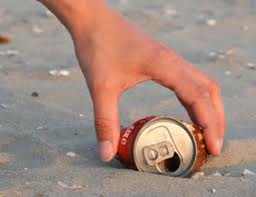Government Grants
Business Grants
Home Owner Programs
Federal Programs
About Us
Lake Roosevelt Model Update (PNW CESU)
Water temperature and total dissolved gas (TDG) in the Columbia River is strongly influenced by the storage and release of water from projects like Grand Coulee Dam.
Previous work has produced a public domain temperature model, known as “CE QUAL-W2”, of Lake Roosevelt for the purpose of informing in-season watershed management decisions to reduce take and to allow the evaluation of various operational and structural alternatives that can influence the regulation of water flow and temperature.
CE-QUAL-W2 is a 2-dimensional (longitudinal-vertical) hydrodynamic and water quality model capable of predicting water surface, velocity, temperature, nutrients, multiple algae, zooplankton, periphyton, and macrophyte species, dissolved oxygen, pH, alkalinity, multiple CBOD groups, multiple suspended solids groups, multiple generic constituents (such as tracer, bacteria, toxics), and multiple organic matter groups, both dissolved and particulate.
The model is set up to predict these state variables at longitudinal segments and vertical layers.
Typical model longitudinal resolution is between 100-1000 m; vertical resolution is usually between 0. 5 m and 2 m.
The model can also be used in quasi-3-D mode, where embayments are treated as separate model branches off the main stem of the reservoir.
The user manual and documentation can be found at our PSU website for the model:
http://www.cee.pdx.edu/w 2. We have been the primary developing group for this Waterways Experiments Station Corps of Engineers model for the last 10 years.
Since 2000, this model has been used extensively throughout the world in 116 different countries.
The objective of this project is to improve TDG modeling of Lake Roosevelt using the existing water quality model CE-QUAL-W2 and provide a peer review in a white paper describing temperature regimes and operational influence on release temperatures.
Tasks include extending the model downstream six miles to the Hydromet gage near Barry, WA, add three additional simulation years to the model, and to perform analyses that evaluate the sensitivity of model predictions to reaeration, wind, bottom friction, and the upstream boundary.
RECIPIENT INVOLVEMENT A repetition of the year-round field sampling and laboratory processing required to complete such a before-after comparison and evaluate the ATP model is necessary.
To take full advantage of this opportunity for learning within the adaptive management process, the following objectives must be addressed:
1) complete calculations and analysis of fish production and its trophic basis at the restoration site and other habitats that were not treated, 2) quantify food webs associated with these sites and conduct analyses like those completed in previous study, 3) conduct the BACI analysis to evaluate responses to side channel restoration, and provide key results against which to calibrate the ATP model.
Previous work has produced a public domain temperature model, known as “CE QUAL-W2”, of Lake Roosevelt for the purpose of informing in-season watershed management decisions to reduce take and to allow the evaluation of various operational and structural alternatives that can influence the regulation of water flow and temperature.
CE-QUAL-W2 is a 2-dimensional (longitudinal-vertical) hydrodynamic and water quality model capable of predicting water surface, velocity, temperature, nutrients, multiple algae, zooplankton, periphyton, and macrophyte species, dissolved oxygen, pH, alkalinity, multiple CBOD groups, multiple suspended solids groups, multiple generic constituents (such as tracer, bacteria, toxics), and multiple organic matter groups, both dissolved and particulate.
The model is set up to predict these state variables at longitudinal segments and vertical layers.
Typical model longitudinal resolution is between 100-1000 m; vertical resolution is usually between 0. 5 m and 2 m.
The model can also be used in quasi-3-D mode, where embayments are treated as separate model branches off the main stem of the reservoir.
The user manual and documentation can be found at our PSU website for the model:
http://www.cee.pdx.edu/w 2. We have been the primary developing group for this Waterways Experiments Station Corps of Engineers model for the last 10 years.
Since 2000, this model has been used extensively throughout the world in 116 different countries.
The objective of this project is to improve TDG modeling of Lake Roosevelt using the existing water quality model CE-QUAL-W2 and provide a peer review in a white paper describing temperature regimes and operational influence on release temperatures.
Tasks include extending the model downstream six miles to the Hydromet gage near Barry, WA, add three additional simulation years to the model, and to perform analyses that evaluate the sensitivity of model predictions to reaeration, wind, bottom friction, and the upstream boundary.
RECIPIENT INVOLVEMENT A repetition of the year-round field sampling and laboratory processing required to complete such a before-after comparison and evaluate the ATP model is necessary.
To take full advantage of this opportunity for learning within the adaptive management process, the following objectives must be addressed:
1) complete calculations and analysis of fish production and its trophic basis at the restoration site and other habitats that were not treated, 2) quantify food webs associated with these sites and conduct analyses like those completed in previous study, 3) conduct the BACI analysis to evaluate responses to side channel restoration, and provide key results against which to calibrate the ATP model.
Obtain Full Opportunity Text:
http://www.grants.gov
Additional Information of Eligibility:
This Funding Announcement is not a request for applications.
This announcement is to provide public notice of the Bureau of Reclamation’s intention to fund the following project activities without full and open competition.
This funding opportunity is a continuation of an existing agreement.
Full Opportunity Web Address:
Contact:
Agency Email Description:
Agency Email:
mritacco@usbr.gov
Date Posted:
2017-08-16
Application Due Date:
2017-08-30
Archive Date:
2017-09-29
Social Entrepreneurship
Spotlight
Exeter Sees Growth in Social Enterprise Sector

A partner at The Fruit Tree for Business LLP and co-founder of ESSENCE, Lorna Turner, discusses why Social Enterprise Day is a good time to celebrate Exeter’s thriving social enterprise scene.

